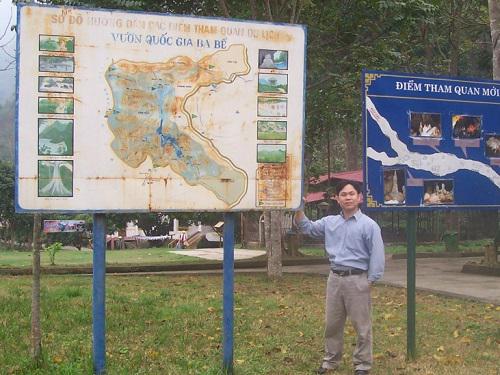Hoang Van Chieu
To identify the most feasible arrangements for cooperation among protected area authorities and local communities in order to achieve both nature conservation and local people’s livelihoods objectives.

At headquarter of Ba Be National Park.
This is a research for my PhD study. The research explores participation of local people and communities in the management of protected areas in the northeast of Vietnam.
Currently, rural people in mountainous regions in Vietnam depend heavily on resources from protected areas as well as other forests for their livelihoods. This is claimed as one of the reasons of uncontrolled extraction of resources from protected areas that is creating difficulties for the management of these forests. However, there has been a lack of effective cooperation between protected area authorities who represent the State and local people to manage these resources. Therefore, this research aims to explore the possibilities for cooperation among protected area authorities and local people in managing resources of the protected areas.
The expected outcome from this research is that the reasonable arrangements for cooperation among these stakeholders will be indicated in order to meet the objectives of both nature conservation and local people’s livelihoods. To pursue this objective, the research will analyse some case studies of protected areas in the northeast of Vietnam. The intended sites include:
(1) Ba Be National Park,
(2) Huu Lien Nature Reserve,
(3) South Xuan Lac Species and Habitat Conservation Area.
The results from the analysis of these case studies will be used to explore the broad context of managing protect areas in the northeast of Vietnam. The data for this research analysis will include secondary data collected from publications and primary data collected by conducting fieldwork. The methods adopted for primary data collection include interviews, focus group discussions and participant observation in the communities inside and around the selected protected areas.
It is expected that this research will contribute to nature conservation through a reduction in the level of uncontrolled resource extraction from protected areas and sustain the local people’s livelihoods.